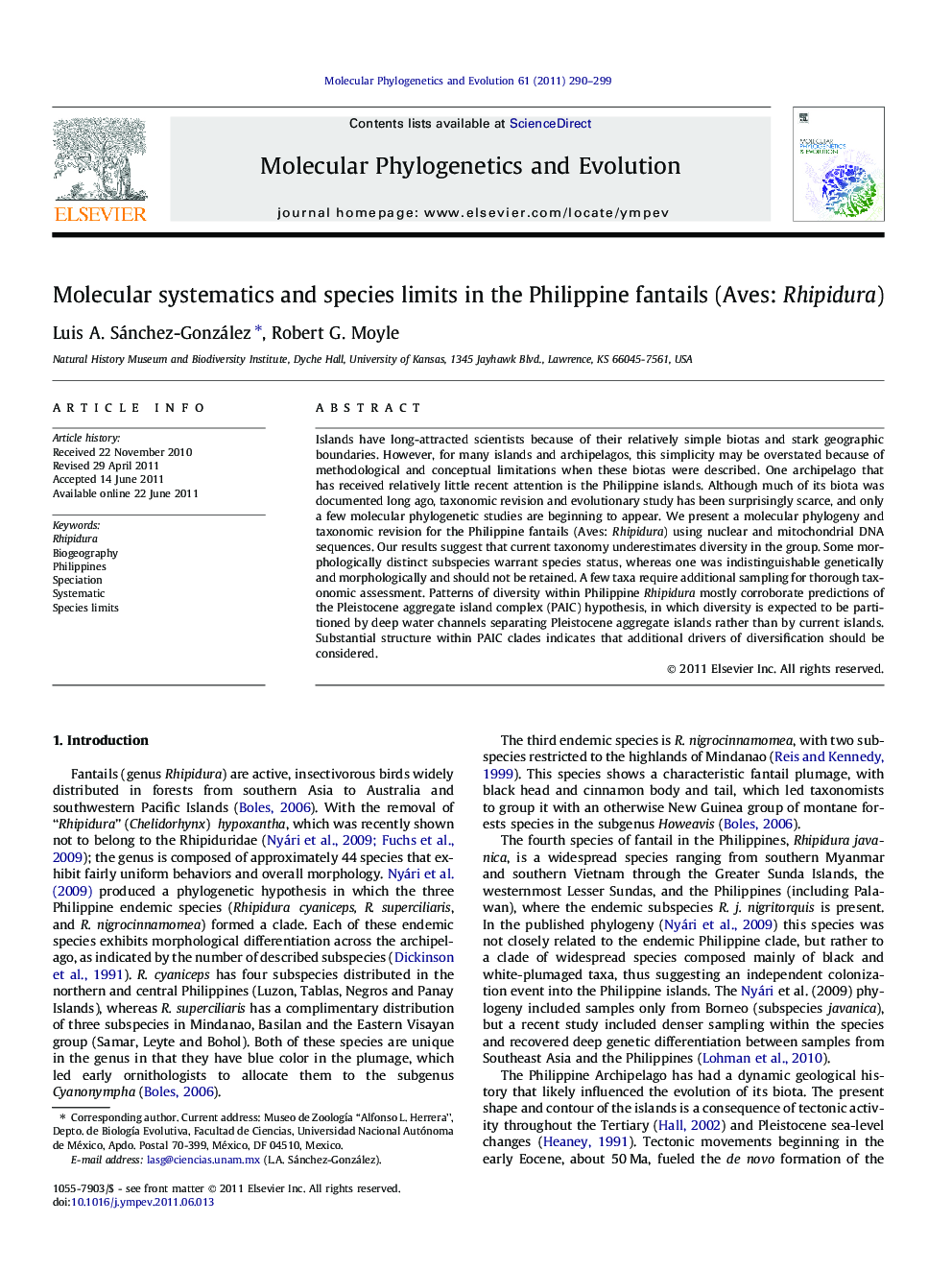| Article ID | Journal | Published Year | Pages | File Type |
|---|---|---|---|---|
| 2834014 | Molecular Phylogenetics and Evolution | 2011 | 10 Pages |
Islands have long-attracted scientists because of their relatively simple biotas and stark geographic boundaries. However, for many islands and archipelagos, this simplicity may be overstated because of methodological and conceptual limitations when these biotas were described. One archipelago that has received relatively little recent attention is the Philippine islands. Although much of its biota was documented long ago, taxonomic revision and evolutionary study has been surprisingly scarce, and only a few molecular phylogenetic studies are beginning to appear. We present a molecular phylogeny and taxonomic revision for the Philippine fantails (Aves: Rhipidura) using nuclear and mitochondrial DNA sequences. Our results suggest that current taxonomy underestimates diversity in the group. Some morphologically distinct subspecies warrant species status, whereas one was indistinguishable genetically and morphologically and should not be retained. A few taxa require additional sampling for thorough taxonomic assessment. Patterns of diversity within Philippine Rhipidura mostly corroborate predictions of the Pleistocene aggregate island complex (PAIC) hypothesis, in which diversity is expected to be partitioned by deep water channels separating Pleistocene aggregate islands rather than by current islands. Substantial structure within PAIC clades indicates that additional drivers of diversification should be considered.
Graphical abstractFigure optionsDownload full-size imageDownload as PowerPoint slideHighlights► Systematics of Philippine Rhipidura was studied using mitochondrial and nuclear genes. ► Two different clades of Rhipidura have colonized the oceanic Philippines. ► The Philippine endemic Rhipidura clade, has speciated in the oceanic Philippines. ► Diversification has occurred among and within Pleistocene Island Complexes (PAIC). ► Diversification and genetic differentiation is not consistent with PAIC paradigm.
